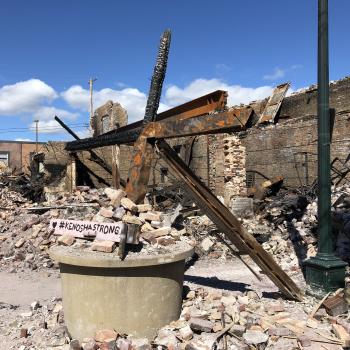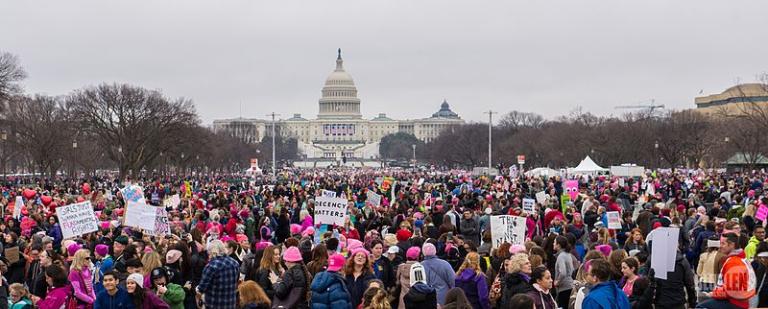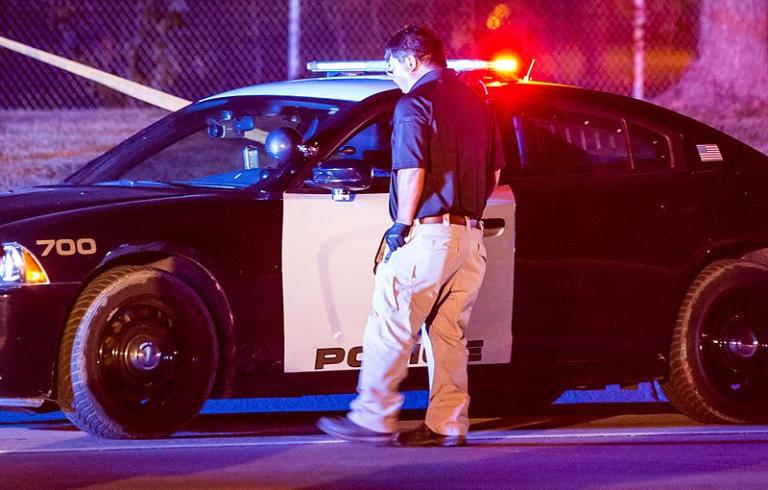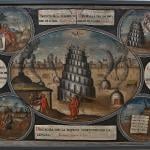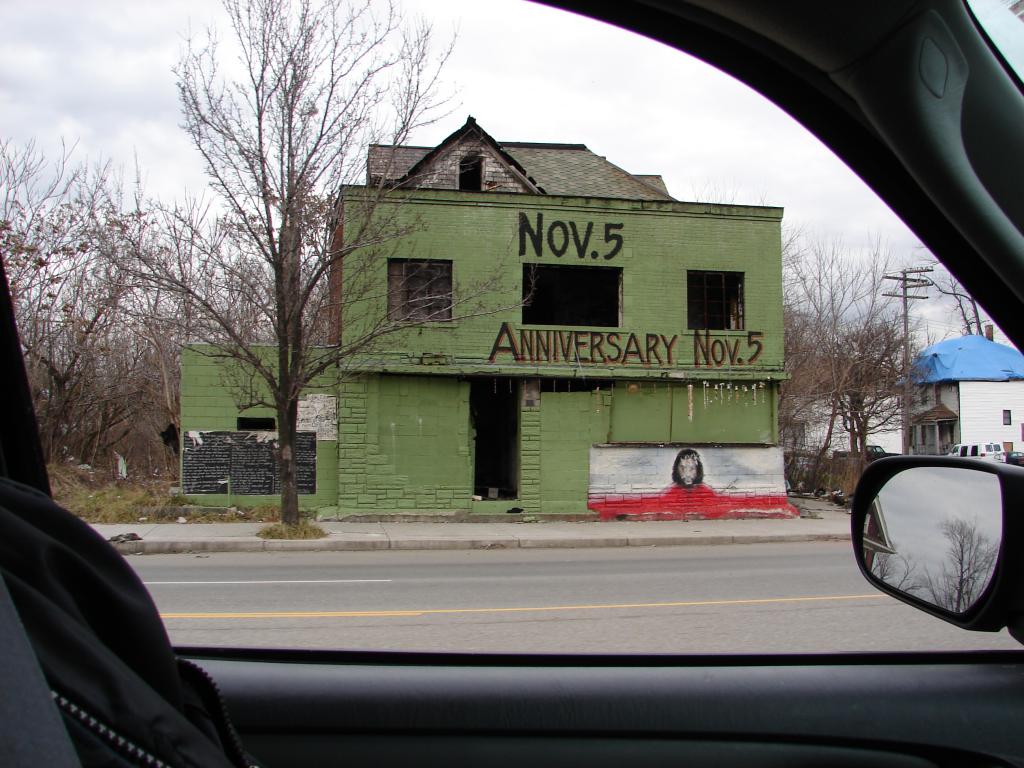
Yes, I reveal my age. Reader, imagine that I was a very precocious child, rather than a young adult, when these events happened: first, in late April – early May of 1992, the riots in Los Angeles sparked by the jury verdict acquitting the police officers who had beaten Rodney King, and, second, the beating death of Malice Green of Detroit, on November 5, 1992.
Now, unlike the King case, two of the officers involved in Green’s death were convicted of second degree murder a year afterwards, though those verdicts were appealed (among other reasons, because the jury viewed the movie Malcolm X prior to deliberation) and retrials reduced the charges to involuntary manslaughter.
So why did the King case produce riots (though he was “merely” beaten, not killed), but not Green’s? One simple answer is that there was no dramatic moment of acquittal, and that the process of overturning the murder verdicts and retrying and convicting with lesser charges was more drawn out. After all, the initial convictions were in 1993, the first cop’s retrial request was granted in 1997, with the new sentence handed down in 1998, and the second cop’s verdict overturned in 1999, with the new sentence in 2000.
But the riots (because, no, once “protests” reach that point in which buildings are being torched, they are no longer merely “protests”) in Minneapolis, and subsequently in St. Paul, began immediately after the death of George Floyd, not waiting to see whether justice would be forthcoming: according to the Wikipedia chronology, Floyd died on May 25th (Monday), the following night protests included the comparatively mild violence/destruction of rock-throwing at police cars, Wednesday a local Autozone was burned and a Target was looted and by the early hours of Thursday “more than 30 businesses in Minneapolis had been damaged by rioters.” That night, the 3rd precinct police station was set on fire, and 170 buildings in St. Paul were looted or damaged.
Separately, today the city announced that the officer whose actions pinning down Floyd killed him, had been arrested and charged with third-degree murder. While the attorney representing the family said this was insufficient and he should be charged with first-degree murder instead, the Hennepin County Attorney Mike Freeman reported that ““This is by far the fastest we’ve ever charged a police officer . . . . Normally these cases can take nine months to a year.”
So it’s reasonable to ask how Detroit managed to avoid the sort of riots that LA experienced then, or Minneapolis and St. Paul are experiencing now (even though there is not now the same loss of life and degree of damage as there was then in LA). It being 1992, and thus preceding the world of the internet, let alone social media, it’s not entirely easy to dig up material, so I’m relying on reports in the library’s ProQuest database, which is a mix of digitized newspapers (and does not include full text for the Detroit papers).
Chicago Tribune, Nov. 8, 1992, “Beating Infuriates Detroit”
On Thursday night, a 35-year-old, unemployed black man, Malice Green, was beaten to death by police officers on the city’s West Side after being stopped on suspicion of a drug violation.
Green’s death has shaken the city and turned the curb where he died into a shrine of anger, tears and betrayal.
People here said this was not supposed to happen in this overwhelmingly black city, where the police department is more than half black and where Mayor Coleman Young has long stressed sensitivity to the community.
But the two officers suspected of the killing are white, longtime members of the department with reputations for toughness.
The similarities between the incident and the beating of black motorist Rodney King in Los Angeles last year have made city officials and others nervous.
What happened exactly and why is still unclear. But the city and the police department have moved quickly to begin an investigation and to maintain calm.
The Detroit News and Detroit Free Press, Nov. 8, 1992, “Detroit is not L.A.” (only summary abstract available)
An editorial discusses the beating death of Detroit motorist Malice Green at the hands of police, warning the public not to make the issue any bigger than it is by making comparisons to the Rodney King beating in Los Angeles.
Austin American Statesman (AP), Nov. 9, 1992, “150 protest beating death by police // Detroit prosecutor says he is working for arrest of 7 officers.”
About 150 people rallied downtown Sunday, protesting the fatal beating of a man by police officers, and a prosecutor said he was pushing for charges to be brought against the officers. . . .
Wayne County Prosecutor John O’Hair said he expected warrants to be issued against the officers Monday, but he declined to say what they might be charged with.
Knox said he couldn’t say if race was a factor in the beating. Green was black, and, although police haven’t identified the officers, the Detroit Free Press has reported that six were white and one was black. . . .
Civil rights activist Joann Watson said the fact the attack occurred in a city with a black mayor, black police chief and a population that is 75 percent black made it more shocking.
USA Today, Nov. 9, 1992, “Detroit quiet after beating; arrests due”
Prosecutors plan to issue warrants today to police officers suspected of beating a black Detroit motorist to death.
Over the weekend, city leaders and the family of the dead man called for peace following the death of Malice Wayne Green, 35, Thursday night. . . .
Green’s father urged calm.
“Whatever they do ain’t going to bring him back,” said Jesse Green Jr. “I’ve told all his friends not to do anything about it. Just let it be.”
“Let the lawyers take care. What’s done is done. They made a mistake, let them pay for it.” . . .
Detroit’s new police chief, Stanley Knox – who replaced William Hart, jailed for embezzling $1.3 million from a secret police fund – acted swiftly to assure a complete investigation.
He suspended without pay all seven officers involved.
Both black and white officers were at the scene of the beating. Knox said he doesn’t know if race was a factor. . . .
Gerald Arenberg, head of the Miami-based National Association of Chiefs of Police, also praised Knox for showing “he’s not going to tolerate this.”
“There doesn’t appear to be any kind of crisis building,” he said, crediting Knox for avoiding riots like those which followed a jury verdict on the beating of Los Angeles motorist Rodney King.
“He apparently learned from Los Angeles what not to do,” he said. “He’s doing what (then-Los Angeles police chief Daryl) Gates should have done initially – damage control.”
USA Today, Nov. 11, 1992, “No violence, but Detroit bitter // Efforts of police, city paying off”
On the spot where Malice Green died, cold rain refreshes the bloodstains, and Nate Biles pokes at one with the toe of his boot.
“There won’t be any rioting,” Biles says.“There’s going to be a bitter feeling, but no riots.”
If Biles’ prediction Tuesday proves correct, it may be because the lethal face-off here between several white police officers and one black man – an incident eerily similar to the beating of Rodney King, which sparked the nation’s largest urban riot – drew a very different response in Los Angeles than in this 75% black city.
In Los Angeles, white Police Chief Daryl Gates defended the officers who beat King.
In Detroit, backed by a black mayor who swept into office nearly 20 years ago in a crusade against police brutality, black Police Chief Stanley Knox has leaped to condemn last week’s beating of Green. He has suspended seven officers and condemned their actions, even before formal charges have been filed.
Some white officers on the city’s more-than-half-black police force are criticizing what they call a rush to judgment – a willingness to sacrifice a few officers to pacify the public.
But many city leaders, and many citizens in the blighted neighborhood where Green died, are demanding harsh and swift action against officers they call murderers.
“I’m going to get justice,” vows the dead man’s father, Jesse Green Jr.
The Green family filed a $61 million wrongful-death lawsuit against the city, the police chief and the officers.
“I think it was murder,” says Detroit Mayor Coleman Young, who was elected in 1974 on promises to integrate the then-overwhelmingly white police department.
Newsday (AP), Nov. 12, 1992, “At Beating Site, Focusing on Justice”
“This is our neighborhood,” said Bernice Smith, whose children went to school with Green. “We’re not going to tear it up like they did in L.A.”
Edmonton Journal (AP), Nov. 17, 1992, “Officers charged with murder; Unarmed black motorist died after beating on Detroit street”
Two police officers were charged Monday with murder and one with manslaughter in the beating death of a black motorist, a case that drew parallels with the Rodney King confrontation in Los Angeles.
A fourth officer was charged with assault.
There was not enough evidence to charge the three other officers who were suspended after the Nov. 5 beating of Malice Green, said Wayne County prosecutor John O’Hair.
Green, 35, died of head injuries after being beaten on a downtown street.
“I feel justice is done. . . . I think they handled it very well,” said the victim’s father, Jessie Green. He had urged calm in the days after his son’s death.
“He’s dead, and any charges aren’t going to bring him back. I’ve got to live on.”
While the beating of an unarmed motorist drew comparisons with the videotaped beating of King and the rioting that followed the acquittal of officers in that case, black leaders have said the Detroit case was different.
They lauded police Chief Stanley Knox, who does not believe the beating was racially motivated, for suspending the officers a day after Green’s death. And Mayor Coleman Young publicly denounced the beating. Knox and Young are black.
“What is different in Detroit is the leadership,” said Jack Gravely of the National Association for the Advancement of Colored People. “When we compare what happened in Detroit with what happened on the other coast, it does make a difference. Without it, this city probably would still be burning at its walls today.”
But this explanation — that the leadership in Detroit was responsible for preventing riots by acting immediately, doesn’t quite explain the contrast with the reaction in Minneapolis, where the responsible police officers were fired the day after Floyd’s death, and where the mayor immediately condemned the officers and called for the arresting officer to be arrested and charged with murder. Scores of other politicians have likewise issued their condemnations, but no one’s wrath is appeased.
Instead, I find myself more drawn to the (wo)man-on-the street comment:
“This is our neighborhood,” said Bernice Smith, whose children went to school with Green. “We’re not going to tear it up like they did in L.A.”
So, in the end, I’m not interested in getting trapped into arguments about whether fire-setting is clearly and inarguably the wrong answer to Floyd’s death, or whether it’s understandable because protesters feel that no reform will happen otherwise. Are the fire-setters outside agitators? I don’t know.
Turns out, this is really just a shout-out to the Bernice Smiths of the world.
(Comment on the image: turns out, since this predates the internet, there are no public domain photographs of Green himself, or I’d have used one.)



